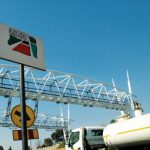Insurers under siege
Are short-term insurance companies the victims of unfortunate circumstances or scandalous profit takers? In his typical fashion, our most outspoken columnist – ROB HANDFIELD-JONES – has some strong opinions on the subject…
You may have noticed that the South African Insurance Association (SAIA) put out a press release saying how worried it is about the future viability of the short-term motor insurance industry in the face of rising crash damage claims.
I’m going to put it more bluntly – the short-term motor insurance industry is screwed. Those are exactly the words I used in a meeting at SAIA a few weeks ago, so I see no harm in repeating them here. At the same time I must thank SAIA for inviting me to offer my input on potential solutions, and since nothing I told them was anything I haven’t said before in public, the story of how the insurance industry arrived at this juncture is worth repeating.
1990 was a watershed year in that the estimate for the number of SA driving licences which were “irregular” (ie. bought, forged or illegal) ticked past 20%. I was but an underling in those days, but the leaders in defensive driving at the time attempted to alert insurers to the potential threat of this development.
However, no insurer or group of insurers was bold enough to confront this problem by offering wide-scale discount incentives for people to become better drivers through training. They would have benefitted from reduced premiums while the insurers themselves enjoyed a lower claims ratio, but nobody suggested it. The evidence for the effectiveness of this kind of training in reducing crash rates is cut and dried – corporate fleet managers have known about it for years, and it’s well-documented overseas as well. Insurers have consistently refused to believe this, although they’re happy to accept current government road safety statistics, despite the latter being not only incomplete, but absolute fiction which is totally contradicted by both the industry’s own claims numbers and the NIMSS mortuary returns studies.
Insurers just plodded along, increasing premiums to cover their losses while the evidence mounted. And then, around 1996 to 1997, government totally lost control of road safety in a series of blunders which saw the fatality rate double. Insurance premiums shot up as a result of the increased claims. The problem is that insurers have now increased their premiums virtually to the ceiling of consumer resistance. The average vehicle owner has no money left for premium increases and I reckon the insurance industry will bleed to death within three years.
Insurers have two choices, only one of which will save them. The first is to train all policyholders to become a low-enough crash risk to be worth insuring, and then making that money back via reduced claims ratios. The second is to sponsor long-term initiatives such as school driver education and so-on to eliminate the root cause of the problem. The first solution would take two years and probably cost in excess of a billion rand. The second, while noble, is pointless – the insurers will be out of business long before it bears fruit.
I am not particularly sympathetic to their plight – they have been warned for 20 years, and I have been attempting high-level engagements on the issue for at least the past ten. They could easily have averted this crisis, but they foolishly chose short-term profits ahead of long-term sustainability. None of which helps those of us seeking to insure probably the second-most expensive asset we will ever own.
Rob Handfield-Jones has spent 20 years indulging his three passions: vehicles, road safety and writing. He heads up driving.co.za, a company which offers training in economical and safe driving.
Published by
Focus on Transport
focusmagsa



